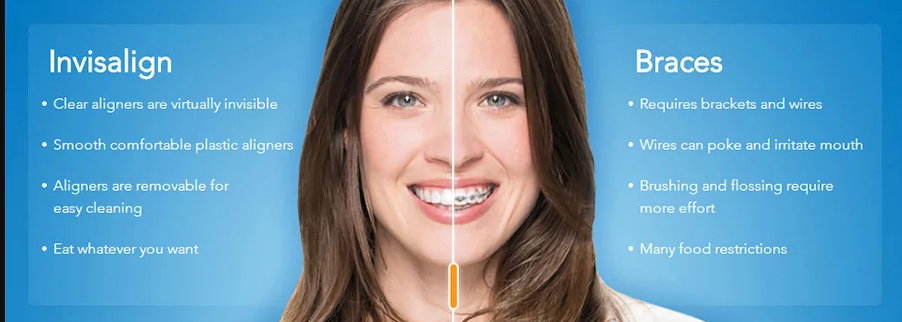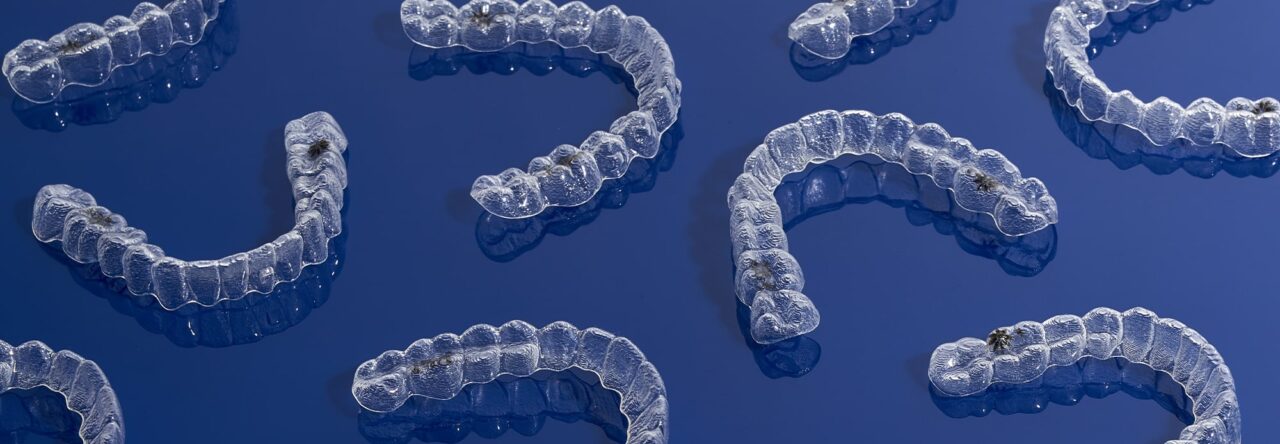I. Introduction
The orthodontics industry has undergone a significant transformation with the emergence of clear aligners, which have disrupted the long-standing dominance of traditional braces.
The increasing demand for these innovative orthodontic appliances has not only intensified competition but also diversified treatment options and made them more affordable.
II. Understanding Clear Aligners
Clear aligners, known for their transparency and customized design, have revolutionized teeth alignment as a groundbreaking orthodontic tool. Made from a clear plastic material, they are tailored to each patient’s unique dental structure using 3D digital impressions.
These cutting-edge appliances offer numerous benefits, such as aesthetic appeal and superior comfort, which contribute to their growing popularity compared to conventional metal braces.
In contrast to traditional braces, clear aligners do not have sharp components that may cause discomfort, making them a more attractive choice for those seeking discretion and comfort in orthodontic treatment.

III. The Comparison: Invisible Versus Visible Orthodontics
Invisible orthodontics, including clear aligners, have opened up new possibilities for orthodontic treatments. These custom-made, virtually undetectable aligners fit snugly over teeth, gradually guiding them into the correct alignment.
This innovation has made them a preferred choice among individuals who are concerned about the conspicuous nature of traditional braces.
On the other hand, visible orthodontics primarily comprise metal or ceramic braces, characterized by their noticeable brackets, wires, and elastic bands.
Although they are visibly discernible, advancements in materials and techniques have made modern visible orthodontics more comfortable and aesthetically pleasing than their older counterparts.
IV. The Influence of 3D Printing Technology on Clear Aligners
3D printing technology plays a crucial role in the fabrication of clear aligners in the dental field. This advanced technology enables the creation of accurate, personalized clear aligners, thus streamlining treatment processes.
The increased precision and rapid production facilitated by 3D printing technology result in cost-effectiveness, enhancing its appeal to both orthodontists and patients.
This influence of 3D technology has expanded the demand for clear aligners, contributing to the competitive dynamics of the orthodontics market.

V. Advantages of 3D Printing in Clear Aligners Production
3D printing technology offers numerous benefits to the clear aligners production process:
- Precision: The high degree of precision achieved in clear aligners design enhances treatment effectiveness.
- Speed: The technology enables fast production, thus benefitting practices with reduced treatment and waiting times.
- Cost Efficiency: 3D printing lowers the production cost of clear aligners, making orthodontic treatment more accessible.
- Personalized Fit: Clear aligners, made using this technology, offer a comfortable and efficient treatment, owing to their customized fit.
- Enhanced Aesthetics: Being virtually invisible, clear aligners are more aesthetically pleasing compared to traditional braces.
- Superior Comfort: As they lack irritating brackets or wires, clear aligners provide an elevated level of comfort, making them a highly desirable alternative to conventional braces.

VI. Conclusion
The emergence of clear aligners, propelled by innovations in 3D printing technology, has disrupted the traditional norms of the orthodontics industry. With a myriad of benefits such as enhanced aesthetics, personalized fit, and superior comfort, clear aligners are reshaping the way orthodontic treatment is perceived and delivered. As a result, they have emerged as a significant contender to conventional braces, challenging their long-standing dominance and shaping a more patient-friendly future of orthodontics.
